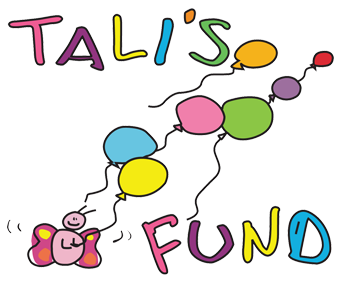What we do
Our Mission
Supporting research targeting safe, effective treatments for children with rare brain cancers. Collaborating globally to promote awareness of research, resources, and treatments related to childhood brain cancers.
Supporting Research
In 2008, Tali’s Fund approached the Arthur and Sonia Labatt Brain Tumour Research Centre at SickKids Hospital in Toronto, Canada to initiate research in the area of ATRT. We collaborated with the Mitchell Benjamin Duckman Fund to provide a seed of $30,000 for ATRT research under the direction of Dr. Annie Huang. At the time, they had data and tumour tissue from 14 patients for analysis. That initial investment has led to landmark findings by SickKids investigators as well as a global collaborative effort with over 150 participating centres worldwide. Tali’s Fund continues to support Dr. Huang’s research team and their collaborative efforts, as well as to advocate for much needed ongoing research to find a cure for ATRT and other rare childhood brain cancers.
Supporting Families and Promoting Awareness of Resources and Treatment Options
Tali’s Fund is committed to supporting families impacted by ATRT and other childhood cancers by helping to direct them to treatment options and by providing information and links for a wide range of supports and resources.
Dr. Huang and her team are known as world leaders—and some children with ATRT are now surviving. We have reason to be hopeful and optimistic.
“We are saving these kids. We are breaking through ceilings.”
Dr. Huang
Why Study Childhood Brain Tumours?
-
Childhood brain tumours are one of the most underserved areas of cancer research.
-
In a number of countries including Canada and the U.S., brain tumours are now the leading cause of cancer-related death among children and adolescents under age 20.
-
Cancers of the brain and nervous system (BNS) are the second most common type of cancer in children.
-
Despite research advances in the causes and treatment of brain tumours, the survival rate from brain tumours is still lower than that of other forms of cancer.
-
Children not only suffer from brain tumours, but also from the consequences of having a severe neurological illness with many behavioral and cognitive problems even if the treatment has been successful.
-
Childhood brain tumours often exhibit distinct characteristics compared to tumours in adults. They tend to arise in different areas of the brain, have different genetic and molecular profiles, and may respond differently to treatments. Therefore, research specific to childhood brain tumours is necessary to develop targeted therapies and interventions.
-
Studying children’s cancers also helps us understand more about adult cancers. One reason is that children’s cancers are not related to lifestyle. Learning why a child develops cancers has provided important clues for therapy and has led to breakthroughs towards predicting cancer risk across different ages.
Why Study RARE Childhood Brain Cancers?
-
It is important to understand that all childhood cancers are considered rare, because they account for less than one percent of all cancers.
-
Yet despite its rarity, an estimated 400,000 children and adolescents worldwide are diagnosed with cancer, and it is the most common cause of disease-related death in children.
-
So, while all brain cancers in children can be considered to be rare, there are many types and subtypes of childhood brain cancers, and rare brain cancers are those that occur less frequently than others within the paediatric population.
-
Rare cancers contribute disproportionately to childhood cancer related death and disability, as they have high fatality rates and higher risk of short-term and long-term treatment toxicity.
-
Rare brain cancers are particularly challenging to treat, as they are poorly recognized and therefore severely understudied. The full clinical spectrum of these diseases remains to be understood. We currently have limited diagnostic and classification tools, and we know very little about the presentation of these tumours, such as the types and locations of cells involved and the patterns of metastases.
-
Up to 1/3 of brain tumours are embryonal brain tumours, and they arise most often in children under age three. These “infant” embryonal brain tumours are aggressive and fast-growing.
-
Embryonal tumour types like ATRT, ETMR and pineoblastoma are classified as rare, and yet they account for 25% of brain tumours affecting children under one year of age.
-
Studying rare brain tumours can also provide valuable insight and lead to deeper understanding of common types of childhood brain tumours as well as other forms of cancer in both children and adults. Some of the pivotal findings in cancer treatment have come from studies of rare cancers in children.
“Childhood cancer is rare, compared to adult cancer—and overall, that’s a very good thing. But calling it rare can actually hurt the chances of finding new treatments for those unlucky children who do get cancer. “
“Investing more resources in researching the relatively uncharted territory of rare cancers may be one way to maximize impact. These are opportunities where you might learn something so fundamental that it transcends the “rare” cancer in which it was discovered.”
Dr. Annie Huang – Learning About Other Cancers
Length: 1:47
Tali’s Fund is helping to support some promising collaborative research projects for 2023!
International Brain Tumour Alliance (IBTA)
Tali’s Fund is proud to be a member of the International Brain Tumour Alliance (IBTA), a global network founded in 2005 as a dynamic worldwide community for brain tumour patient organizations and others involved in the field of neuro-oncology. The IBTA brings together experience and expertise from all over the world with the aim of enhancing the well-being and quality of life of brain tumour patients and their families.
